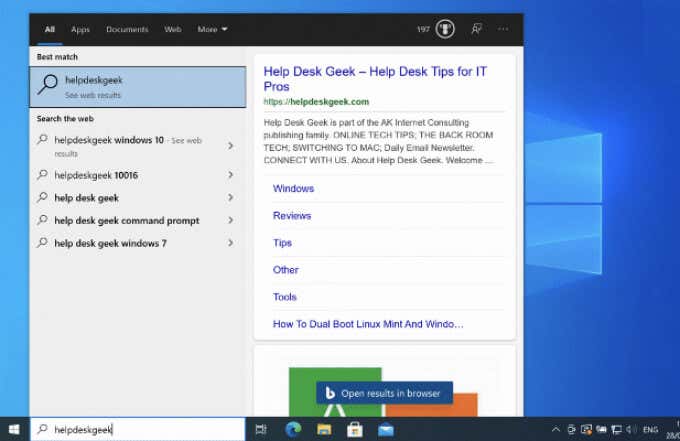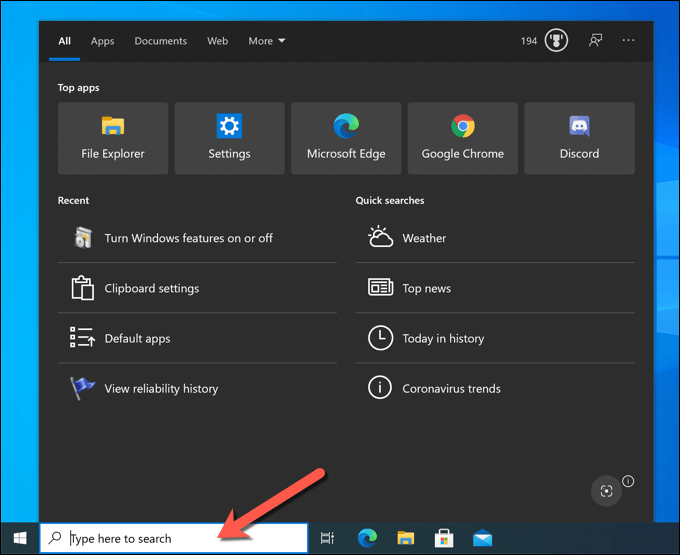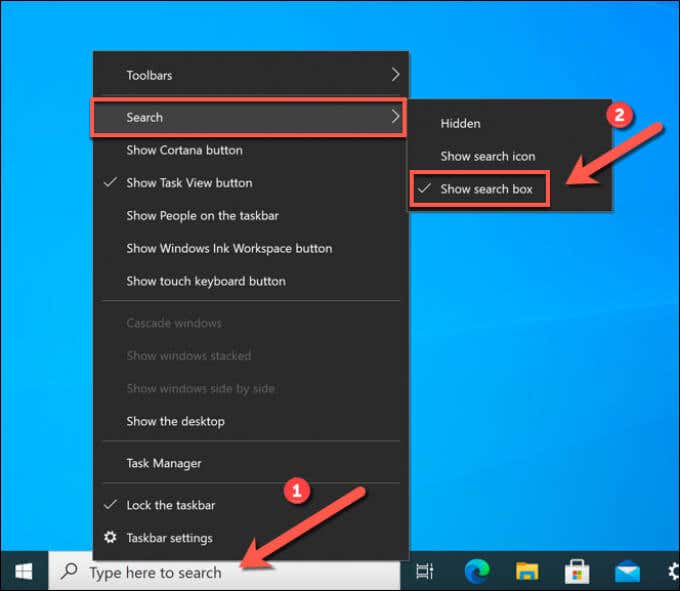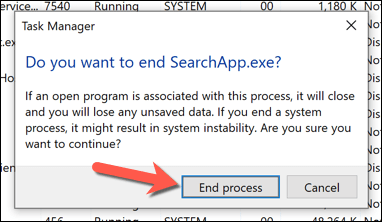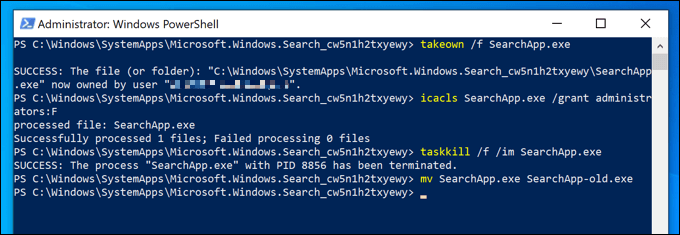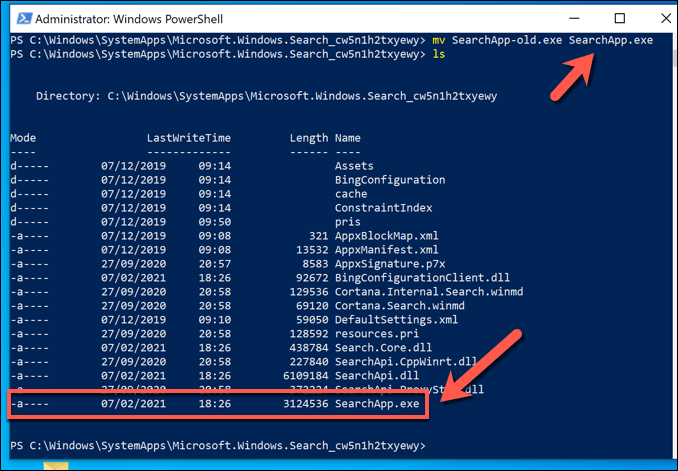One fairly simple-to-understand process is SearchUI.exe. As the name suggests, SearchUI.exe (or SearchApp.exe) is a component of Windows 10’s search features—in particular, the search tool that was originally part of the Cortana personal assistant. Here’s everything you need to know about it.
What Is SearchUI.exe (or SearchApp.exe) and Should You Disable It?
SearchUI.exe is the process that allows the search bar on your taskbar to work. SearchUI.exe was previously combined with Cortana, the Windows 10 personal assistant, but was removed from Cortana in the Windows 19 19H1 update in April 2019 and renamed SearchApp.exe to distinguish it from other components. As it stands now, SearchApp.exe is a typically low-resource process that sits in the background. It uses some resources, however, to ensure that when you press the search bar in the bottom left, the search menu appears almost instantly, allowing you to search your PC or the web, open certain apps, or change your PC settings. This is a very basic search tool that relies on other processes (such as the Windows Search Indexer) to manage file indexing or web searches, allowing Windows to quickly pull up files and installed apps when you search for them. As a Windows system process, SearchApp.exe (or SearchUI.exe) is entirely safe to run and use. If you’d prefer to disable the search tool, however, you can. You can hide it from view, ensuring that the process runs but doesn’t use any of your system resources. Alternatively, you can stop the process from running, ensuring that the search feature is disabled (either temporarily or permanently).
How to Hide the Search Bar on Windows 10
Before you consider disabling SearchApp.exe (or SearchUI.exe) on Windows, you may prefer to hide the search bar instead. This ensures that Windows’ search features remain active and available, but the search bar itself is hidden. The SearchApp.exe (or SearchUI.exe) process will remain paused but enabled.
How to Manually Stop the Windows 10 Search Bar Process
The Windows 10 search bar (SearchApp.exe or SearchUI.exe) is always running on your PC, even if you hide the search bar from view. Should it become unstable at any point, however, you’ll need to stop the process and restart it. For instance, if the search menu itself repeatedly freezes, you may need to end the process to fix the problem. You can do this using Windows Task Manager or by using Windows PowerShell.
Using Task Manager
Using Windows PowerShell
Another way to quickly disable a broken search bar process on Windows 10 is to use the Windows PowerShell.
How to Disable SearchApp.exe or SearchUI.exe on Windows 10
The steps above should help you to hide or stop the running search bar process—but only temporarily. If you want to stop SearchApp.exe or SearchUI.exe from running, you’ll need to use the Windows PowerShell to take ownership of and then rename the executable file to stop it running.
Disabling the Search Bar Process
Running these commands will stop Windows from opening the search bar process—in effect, disabling it completely. Unfortunately, it isn’t possible (at present) to remove the app using Windows PowerShell or other tools, so this remains the best method for stopping it from working on your PC.
Resolving Search Issues on Windows 10
If you prefer to use the Windows search bar to search your PC or the web, you’ll need to leave the SearchUI.exe process running on your PC. If you’d prefer to limit the amount of data Microsoft records on you, however, it may be best to disable it fully using the methods listed above. If you’re running into search issues on Windows 10, you might need to troubleshoot the problem by rebuilding your search index. If that doesn’t work, you may need to look at further troubleshooting steps, such as using the Windows Troubleshooter or advanced commands like SFC to restore your system files.
